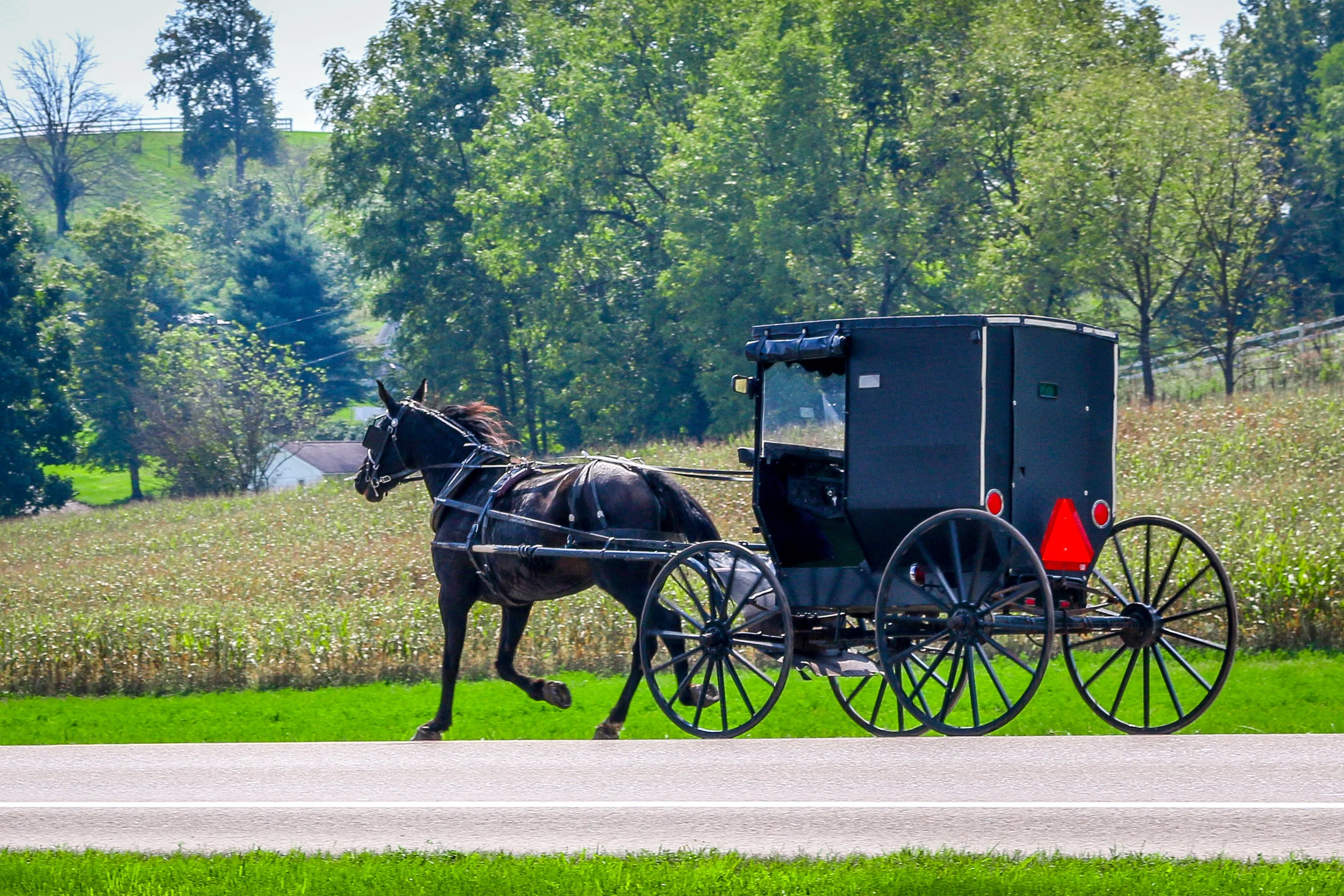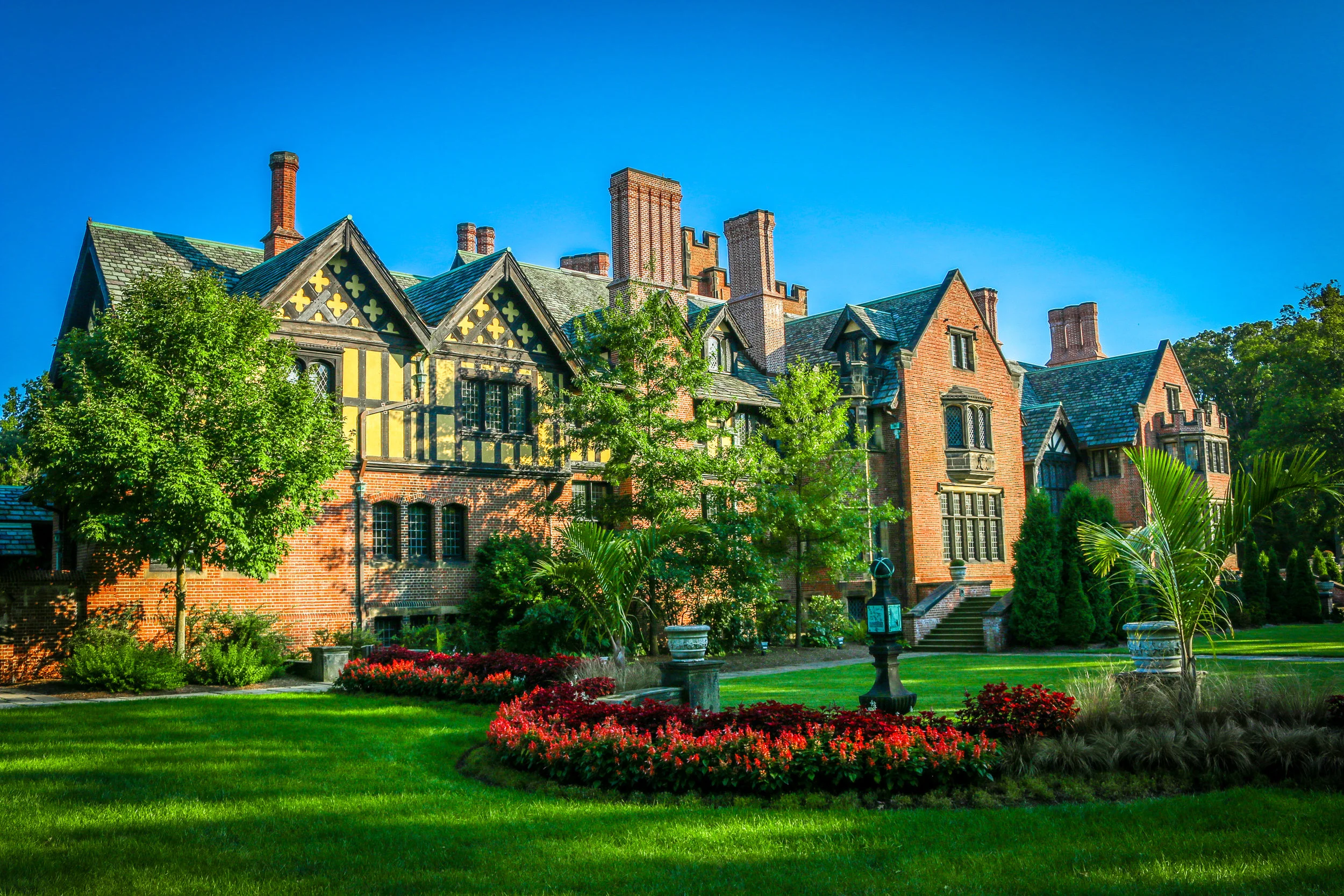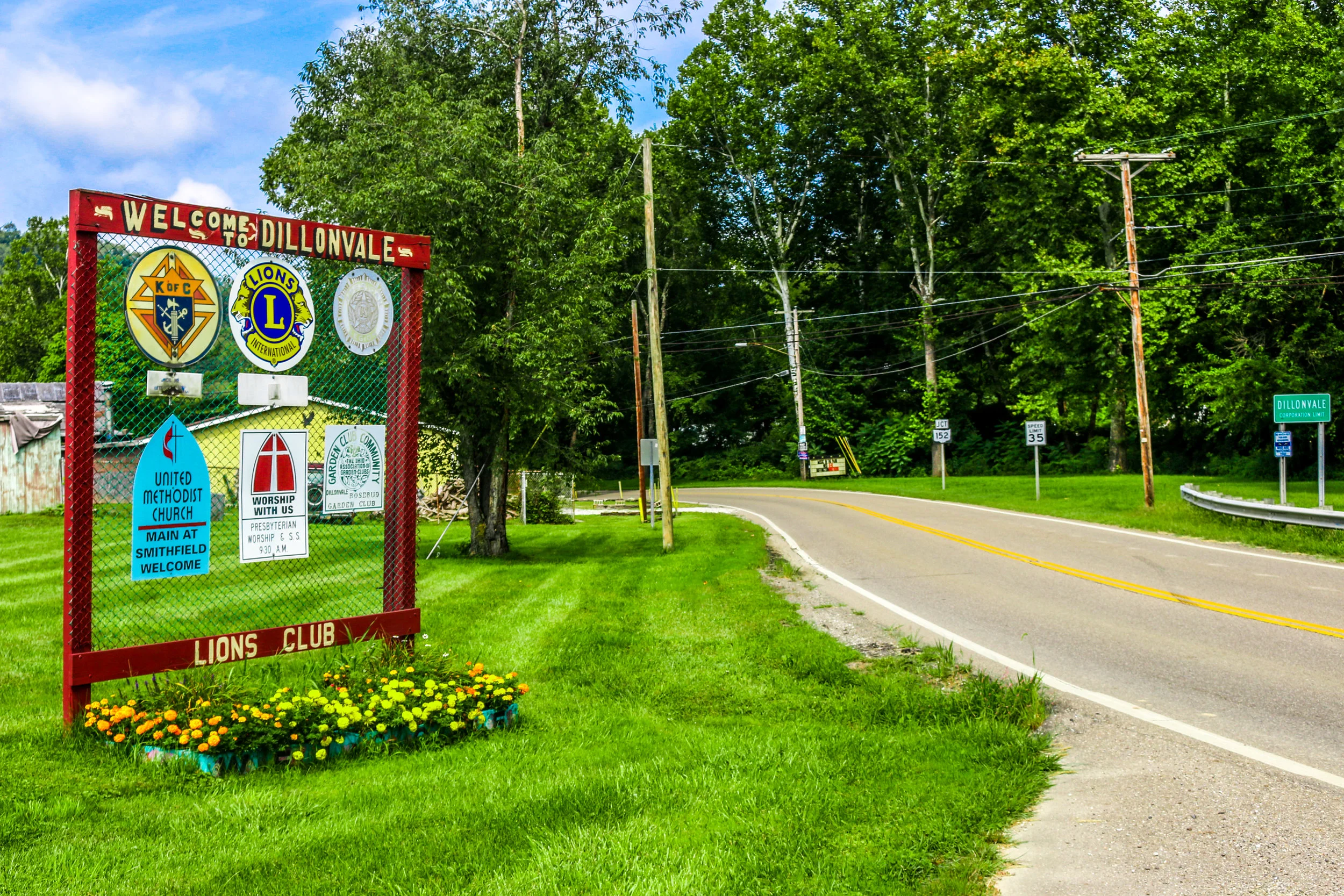Holmes County, Ohio is home to over 10% of the world’s Amish population. The first Amish settlers arrived in the region in 1809 along Sugar and Walnut creeks, and today the area is home to over 35,000 members of the Amish community. Holmes County is also home to a large Mennonite population, who are similar to the Amish in their religious beliefs, but socially are more accepting of modern conveniences like cars and electricity. This area is mostly agricultural, but there are some small to medium sized towns as well. Visiting Amish Country in Ohio was similar to my experience doing so in Pennsylvania. There is great curiosity about the Amish which brings many visitors to the area, but in reality the Amish are busy working on their farms and would probably prefer to be left to their work. This leaves other people scrambling to scoop up those tourist dollars with things like the World’s Largest Cuckoo Clock (or Dutch Wonderland Amusement Park in Pennsylvania - nothing is more Amish than a good roller coaster) and can create a Disney-like atmosphere. You can definitely get some wonderful bread and cheese in these regions and also some delicious baked goods. I also really enjoyed visiting the Amish and Mennonite Heritage Center in Millersburg. There is a fascinating Cyclorama there which tells the entire history of the Amish and Mennonite religions and how they evolved over time. They also have a wonderful video which explains the key differences between the Amish and the Mennonites. Both point out that in many ways the Amish and Mennonites are like anyone else - they have marital issues and rebellious teenagers too. But they also point out that because their lives are simple with all of their basic needs met, they don’t long for material goods and are more likely to feel satisfied than those of us who live in a modern world of mass consumerism. I can certainly agree with that...
Viewing entries in
History
Stan Hywet is the one-time home of Goodyear Tire and Rubber Company co-founder F.A. Seiberling and his wife Gertrude. The Seiberlings started plans for Stan Hywet in 1912 and construction continued until 1915 when the house was completed. Cleveland architect Charles S. Schneider designed the house in the Tudor Revival style, and the completed home covered 64,500 feet and has 65 rooms, 23 bathrooms and 23 fireplaces. When the Seiberlings passed away, Stan Hywet passed down to their children who opened the doors for tours to the general public in 1957. Because of this continuity, the house is remarkably intact with all original furniture, artwork and many household items like sheets and clothing. Stan Hywet is an Old English term for “stone quarry”, one of the most prominent natural features on the grounds which was later turned into a lagoon for swimming. The estate is located just a few miles from downtown Akron, a town which Goodyear helped turn into the “rubber capital of the world”. I loved my visit to Stan Hywet and would definitely recommend it to anyone visiting the area. It is a beautiful home and is beautifully appointed, but it also feels lived in. I chose a guided tour when I was there which was definitely worth the extra $4 on top of the admission price of $15. The sun was really bright and intense during my visit which didn’t help my photos, but I think these will give you a good idea of what the house and grounds look like. I hope you enjoy them.
My maternal grandfather died when I was just 3 years old. I have only the faintest memory of him, and it's likely those memories come more from old photos and home movies than anything else. I know the waves in my hair are his. I know he was a bombardier in the Pacific theater and served in Korea. I remember being a teenager and slipping on his old leather bomber jacket and loving the way it felt and the smell of the leather. I know that he worked at Sears after he retired from the Air Force and I kind of believe I remember visiting him there as a kid (this website was built at the library across the street from that old Sears building). Visiting my grandmother's house growing up, I spent a lot of time in his workshop building model cars and airplanes. I liked his tool collection and how everything seemed to have its place, and I always felt connected to him there. Outside of these few small things though, I really only knew one thing about him and about that side of my family which was the name of his hometown: Dillonvale, Ohio.
Washington Court House is a quiet town in Fayette County in central Ohio. From what I've read and heard, it's always been a quiet town - always, that is, except for one night in October of 1894. That night, a mob formed outside the courthouse in an attempt to lynch a prisoner being held there. Shots were fired and five men were killed. This incident has come to be known as the Washington Court House Riot of 1894.
In March of 1913, massive rainstorms over Easter weekend caused the Miami River to swell and break through the levees built to contain it. Water rushed through downtown Dayton reaching depths of 20 feet. The flood would do $100 million in damage, destroy 20,000 homes and take 360 lives. Miamisburg was devastated with much of the city underwater.
Relief efforts arrived with the Red Cross setting up tent cities to provide shelter to the displaced population. Miamisburg resident Sherman "Cocky" Porter volunteered to try and help feed the people and the relief workers. Trying to feed hundreds of people a hot meal is no easy task, so Porter decided to cook up a huge batch of hamburgers and pass them out to the crowds. They were a hit…
I love baseball. I couldn't quote batting averages off the top of my head nor could I tell you who's won every World Series, I simply love the game. I love the sight of a ball field with its crisp white lines, the call of "cold beer, peanuts, crackerjacks" from the vendors climbing the bleachers and the sound of a well hit ball as it leaves the bat headed for the outfield. I love the history and tradition of the game and how it has often marched alongside, and evolved with, the history of the country. You can probably imagine my excitement then, when, while visiting the city where professional baseball began, I was able to also view the largest private collection of baseball memorabilia in the world.
The Green Diamond Gallery, in suburban Cincinnati, is a magical place filled to bursting with some of the most awesome mementos to the history of the baseball. While it's not a massive place, I spent three hours there trying to take it all in…
The National Air Force Museum in Dayton, Ohio houses a massive collection of aircraft ranging from the very earliest flyers to space-age satellites. Highlights include Boxcar, the plane which dropped the atomic bomb Fat Man on Nagasaki in 1945 and the newly restored legend Memphis Belle. Also on display are all of the retired planes which have carried United States Presidents throughout history. You can go inside the plane which carried John F. Kennedy's body home from Dallas while Lyndon Johnson was being sworn into office on-board. The museum is free and open 7 days a week. While touring the museum, my eyes were drawn to my favorite aspect of old planes: the nose and tail art which was often hand-painted by the airmen themselves. These are often telling of the men who painted them and the situations in which they found themselves, many of them as far from home as they had ever been. Here are some of my favorites from my recent visit to the museum.
Originally settled in 1788 at the confluence of the Ohio and Licking Rivers, Cincinnati grew to be the largest inland city in the country and the sixth largest overall in the years leading up to the Civil War. In the latter half of the 19th Century, Cincinnati was often referred to as the "Paris of America" due to its many large and beautiful buildings. Today, many of these grand old dames still tower over the city harking back to a time when things were built with style and built to last. I spent most of my time in Cincinnati with wide eyes and my camera whirring away. Here are some of my favorite old buildings ranging from private homes to churches to public buildings. Cincinnati is definitely a city worth visiting for many reasons, but the architecture was definitely what struck me the most. Enjoy!
Sadly leaving Athens County behind, I stopped for a brief visit at the Buckeye Furnace State Memorial. Tucked back in the woods, this was a great place to learn more about the production of pig iron, an industry that brought a lot of wealth to the region. I had the place all to myself but could imagine the small community which once stood there and kept the furnace going. This was another of Appalachia's hard labor industries, and one that disappeared as the iron ore dried up and the nation's demands shifted to steal. It was a cool place to visit.
From there I headed out to the Bob Evans Farm in Rio Grande where I had a big breakfast for lunch and wandered around the property for a while. I learned the story of Bob and how he started with a steakhouse, but soon started making sausage as well. This sausage would catapult his business into one of Ohio's best known names.
Inspired by murals he had seen across the state in Steubenville, Dr. Louis Chaboudy hoped to create something similar in his hometown of Portsmouth. In 1992, he commissioned Robert Dafford to begin work on a project which would last 10 years. Over that time period, Dafford painted over 50 murals which stretch 2200 feet along the Ohio River. These murals tell the history of Sciotto County and of the people who have lived there. It is a wonderful project which I really enjoyed visiting. The local Visitor's Center provides brochures and even a cell phone tour for your visit. Unfortunately I was shooting into the sun while I was there, and all of the murals are different sizes making it difficult to crop them and still have a nice layout for this post, but I still thought that they were wonderful and wanted to share them with you today. Enjoy!
Founded in 1849 on the Ohio river and due to the area's rich iron-ore content, Ironton grew to be one of the largest iron producing regions in the world. The iron industry continued to grow through the latter half of the 19th century, and Ironton prospered. As the area's iron played out and the nations demands transitioned towards steel, Ironton's prominence diminished. The decline of the iron industry, coupled with two devastating floods nearly wiped out Ironton. Today it is a shadow of its former self, but still has some fascinating buildings that hark back to an earlier time. Driving through on a beautiful afternoon, I had to stop and take some photos. It was a really cool city to visit and I don't have to use too much imagination to picture it during its heyday. Enjoy!
The southeastern corner of Athens County, Ohio sits right across the Ohio River from West Virginia, making it a perfect transition as I begin my month-long exploration of the Buckeye State. While the city of Athens is home to Ohio University and exhibits all of the best qualities of a quintessential college town, you don’t have to drive far before it becomes clear you are definitely still in Appalachia. As I drove the back roads and explored the history and culture of the area, I found it both new and familiar at the same time. The history of Athens County is fascinating, and in this post I’d like to tell you all about it through six stops I made as I visited the region.













